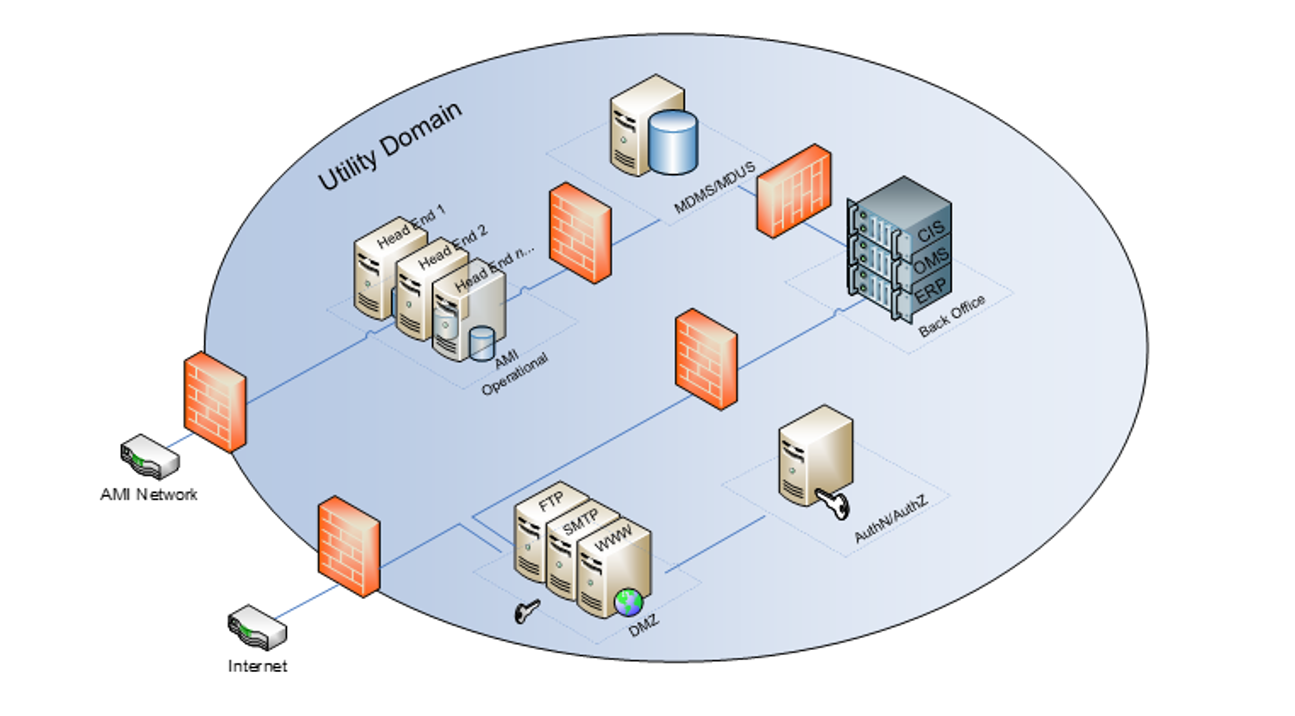Small Utility – Big Utility Problems
Small utility resources – big utility integration problems
I have often been asked by utilities about changes in scope, scale, or context when it comes to challenges such as systems integration. There is often an expectation that if the utility is smaller, the system integration problem will be easier.
It turns out though that small utilities all have the same system integration challenges as large utilities. The problem they face is having the same kinds of integration challenges, but they usually don’t have the staff to address these challenges. If the system doesn’t come “out of the box” with what they need – they live with it.
Let’s take metering as an example. Consider the diagram below.

In this generalized diagram of a utility for the metering context, you see all the likely in-scope systems. Various head-ends, depending on the kind of metering that needs to be supported, various back-office systems that will consume metering data, the firewalls at the border and internally that provide the layered security, and the DMZ, where the servers provide various web-based functionality.
In this configuration, there are two potential differences between a small utility and a larger utility.
- The number of required Head-End systems.
- Whether a MDMS is used.
The number of AMI Head-End systems will usually be determined by the commodity being metered, such as electricity, water, and gas, and the vendor used. Although you may be able to use a single AMI Head-End in those rare instances where multiple meter vendors are compatible with a single Head-End. The number of Head-Ends may also change depending on how the utility segregates its territory. Here, a smaller utility has an advantage. If they are small enough, they might get away with a single Head-End (redundancy and load management issues aside). A large utility may segregate their territory so that different Head-Ends handle different areas.
But what does not change? Data integration issues.
This is because regardless of how many meters a utility has, the same use cases and hence, data integration points it will have. Each meter needs to be read, each meter may need to be pinged, meters need to be swapped out, meters are subject to turn-on/turn-off, meters will send “last gasp” messages when the power goes out.
For each of these use cases there is a corresponding data integration. And once that message is built, it is the same whether it is for a single meter, dozens, or for millions – the same data is passed, thus the same message infrastructure needs to be built.
However, there can be some architectural differences between large and small utilities.
For example, a smaller utility may forego utilizing a meter data management system (MDMS). This would eliminate one set of integrations if that system does not exist. Although some of those integrations would then go direct to the CIS or wherever validating, editing, and estimating occur for the creation of billing determinants that make up a bill. Generating billing determinants is usually a chore for the MDMS, although they do provide other algorithms that may not be present in an AMI Head-End so there may be that tradeoff in functionality as well.
Finally, in one case I have seen smaller utilities have a more complex integration than a large utility. This was an instance where two neighboring utilities, since they were small, decided to use their OMS and metering systems as backups for the other. In case one went down, the other would pick up the slack. This necessitated creating additional integrations so that the utilities could send the respective data to their neighbor as required.
Benefits of data integrations standards.
Regardless of whether the utility is large or small, utilities of all sizes will benefit from a standards-based approach when developing their messaging infrastructure. The use of data integrations standards such as the UCAIUG common information model (CIM), that underpins several families of International Electrotechnical Commission (IEC) standards and MultiSpeak, have shown to reduce risk, hold down maintenance costs, and speed development of data integration. Vendors that don’t support these standards are beginning to be left out in the cold as the rest of the world follows a standards-based approach. Thus, not much can be done about how many data integration points there are – the use cases will determine that, but a standards-based approach can reduce the risk and architectural debt associated with creating the messaging infrastructure.
Contact the Xtensible team to start a standards-based approach and develop a strategic roadmap for systems integration. Xtensible stands ready to help. We have over 25 years’ experience in management consulting and assisting utilities globally with standards adoption and data integration needs.
Back To Blog




